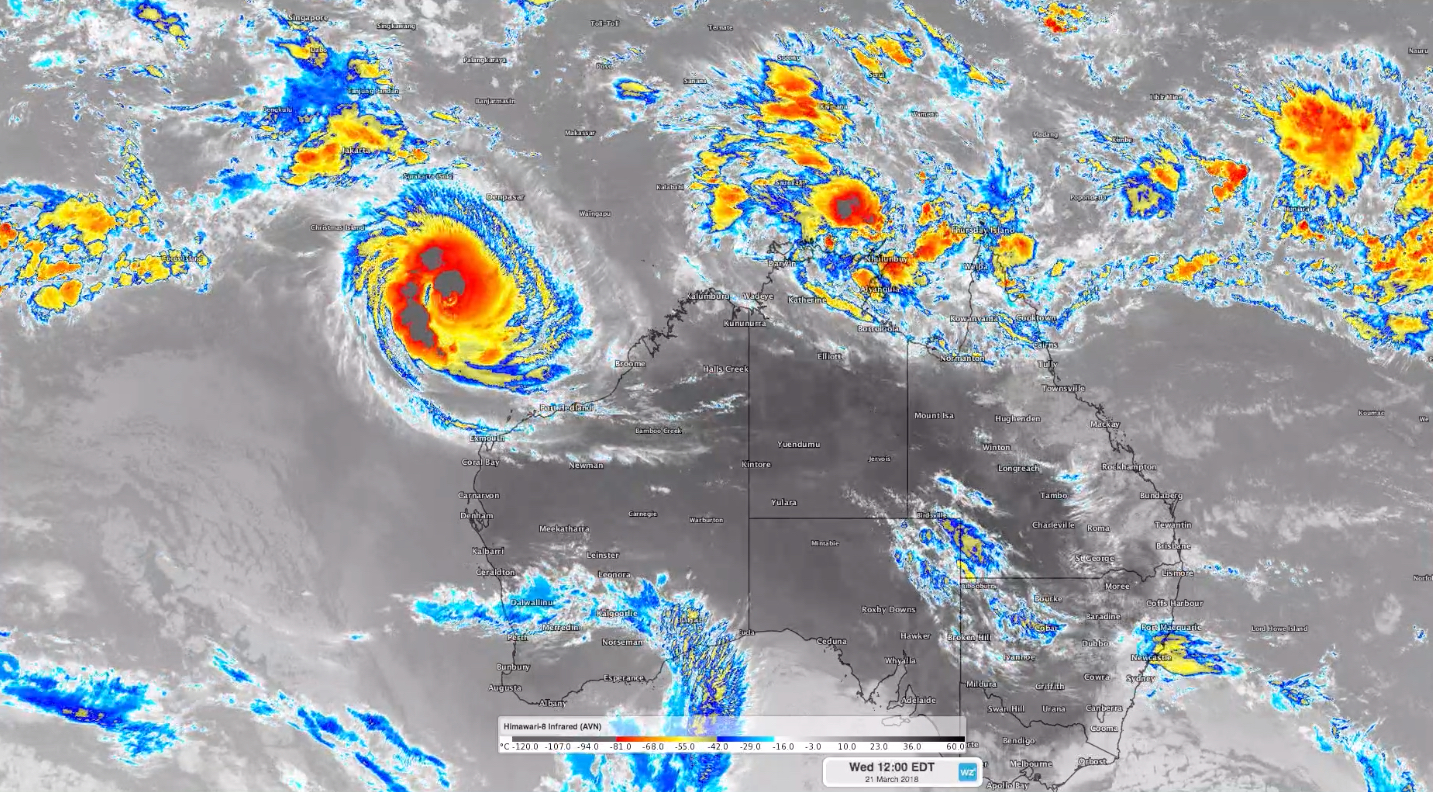Why tropical cyclones can come in clusters

A wave of tropical storms sweeping around our planet can help clusters of tropical cyclones develop near Australia every few weeks.
You may have noticed that during Australia's tropical cyclone season, which runs from November to April, some weeks seem to have a lot more tropical cyclones than others. Last season for example, there were three tropical cyclones concurrently spinning over Australian waters in late March.

Image: An active week of tropical cyclone activity during late-March, 2018.
One of the factors that drives an increase in tropical cyclone frequency near Australia, and other parts of the world, is something called the Madden Julian Oscillation (MJO).
The MJO is a pulse of increased convective activity, or storminess, that travels around our planet, from west to east, near the equator, every 30-60 days. In addition to increasing convective activity throughout the tropics, the MJO is also known to influence a number of environmental factors that affect tropical cyclone development and growth, such as vertical wind shear, low-to-mid level moisture, vertical motion and sea level pressure.
The MJO alternates between active and inactive phases as it travels around our planet every 30-60 days. It's during the active phase that the MJO has its greatest influence on promoting tropical cyclone activity and tropical rainfall in general.
According to research carried out by Philip Klotzbach from Colorado State University, tropical cyclone frequency and the rate of cyclone intensification are both enhanced during and immediately following an active phase of the MJO.
The MJO passes through eight different regions as it travels around our planet. Of these eight regions, Australia is influenced by the MJO when it is between region 3 and region 6. You can track the location and strength of the MJO throughout the year on this diagram: http://www.bom.gov.au/climate/mjo/
While an active phase of the MJO in or near the Australian region does not guarantee enhanced tropical cyclone activity, it increases the potential for the development and rapid intensification of tropical cyclones. It may be worth keeping an eye on the MJO this season if you live in a cyclone-prone part of Australia.